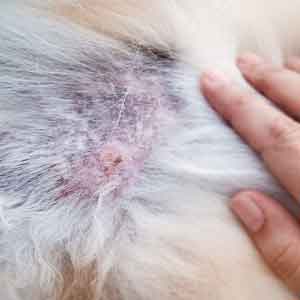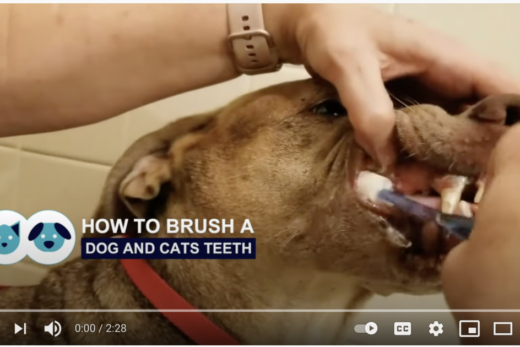Dogs are just like us. Although a blanket of fur covers their skin, it can be just as sensitive and responsive as human skin.
Dogs are prone to developing many of the same skin conditions that people can develop. Most of the time, dog skin problems are treated or resolved in the same manner as common skin problems for humans.
If your dog keeps scratching, biting, licking, or chewing at the same spot, look through their fur. You might see signs of one of these eight common dog skin conditions.
And if you spot something concerning about your pet’s health, it’s probably time to call the vet. Skin conditions are one of the most common reasons for a vet visit, so you’re not alone.
How Common Are Dog Skin Conditions?
Skin conditions are widespread in dogs. Their coats can hide flaky skin, dandruff, allergens, parasites, bacterial infections, and fungal infections. Their fur traps irritants against their skin, potentially leading to skin conditions and infections.
Dog skin conditions are most common in the summer months, especially when it rains. High pollen counts and moisture in the grass can contribute to allergies, and spread common bacteria or fungi, even if your pet has a solid immune system.
It’s important to be vigilant year-round, but you should be especially mindful when the weather starts to warm up. Let’s look at easy ways to tell if your pet has an untreated skin condition.
How Can I Tell If My Dog Has a Skin Condition?
Skin conditions rarely go unnoticed. Your dog’s behavior will tell you what’s happening, and a quick look will reveal more information.
Visual Examination
If the skin issue has been present for several days, you should be able to recognize the problem just by looking at it. If the skin is red, flaky, oozing, covered in scabs, dotted with a rash, or balding, that’s all the information you need to know something is wrong.
Excessive Licking and Scratching
Some skin conditions can be harder to spot, particularly widespread ones. If the symptoms just started, symptoms like redness or bumps may not be visible immediately. Instead of looking for visual indicators, observe your dog’s behavior.
If your dog is obsessed with the excessive licking of an affected area, it could be the itchiness of a skin condition driving them crazy. The itchy skin won’t go away, but your dog will keep trying until they find relief. Just keep an eye out for hair loss.
The 8 Most Common Skin Conditions in Dogs
Let’s look at some of the most common skin conditions in dogs and how you may be able to provide some relief as you head to the vet for further guidance.
1. Yeast Infections
Candida albicans — a fungus that generally lives on the skin and in the body — is usually harmless. It only becomes a problem when its growth goes unchecked for extended periods. Yeast infections often develop in areas your dog cannot easily groom themselves, such as the ear canal, between their toes, or the groin.
Yeast infections leave the skin red and irritated. They often have a foul, sour smell or can smell like bread yeast. Topical antifungal treatments like miconazole can be applied directly to the area.
Keeping the infected area clean and dry will help soothe the area while the antifungal treatment options work. If your pup is left unattended to lick the site, it can lead to hot spots.
2. Ringworm
Ringworm is a very contagious fungus that affects all animals and humans. It’s called “ringworm” because it often appears in red, raised circles that resemble the shape of a worm. There are no worms involved in ringworm.
If your dog has ringworm, you need to quarantine them away from other animals and people in your home. The infection can quickly spread through contact.
Your dog will need to take antifungal medication prescribed by a vet. You’ll also need to wash and sanitize everything your dog has touched. If you don’t, your dog can become reinfected.






